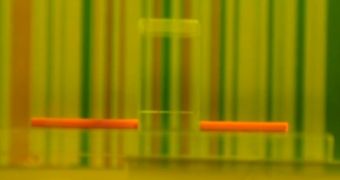Invisibility is something that humankind has dreamed of achieving for decades, if not centuries, but never did, folklore and legends from all around the world notwithstanding.
Both fantasy and science fiction authors came up with theories, over the years, of how a cloak of invisibility would be possible.
Baile Zhang, an assistant professor of physics at Nanyang Technological University in Singapore, might have finally come up with something viable.
Speaking as part of TED Fellows Day, he actually gave everyone a reason to feel awed, and he only had to look in nature to do it.
TED Fellows Day is an occasion for young researchers, artists, and techno-geniuses to come together and show off their inventions, or brainstorm new ideas.
Zhang's cloak was a main attraction, even though it was still very, very small. Then again, things usually start small, and they are actually big compared to others.
“Invisibility” shrouds have been demonstrated for microscopic particles in the past, and many of them only blocked out the infrared spectrum. That made them means of fooling radars and other surveillance systems more than anything else.
Zhang's invention is macroscopic, hence the “wow” factor. When asked, by editors from Boing Boing, how he'd done it, the man said that the cloak was made of two optical crystals found in nature.
When cemented together, they bend light and suppress shadows almost completely, thus hiding the objects behind/beneath/inside them.
The cloak was kept in a tiny clear box and made a post-it note vanish. To prove it wasn't a sleight of hand, Zhang even pushed the note around, from one side to the other.
The only sad thing is that nothing might come of this idea. Zhang only made the cloak for fun. We can only hope that someone will pick up the concept and do something with it.

 14 DAY TRIAL //
14 DAY TRIAL // 